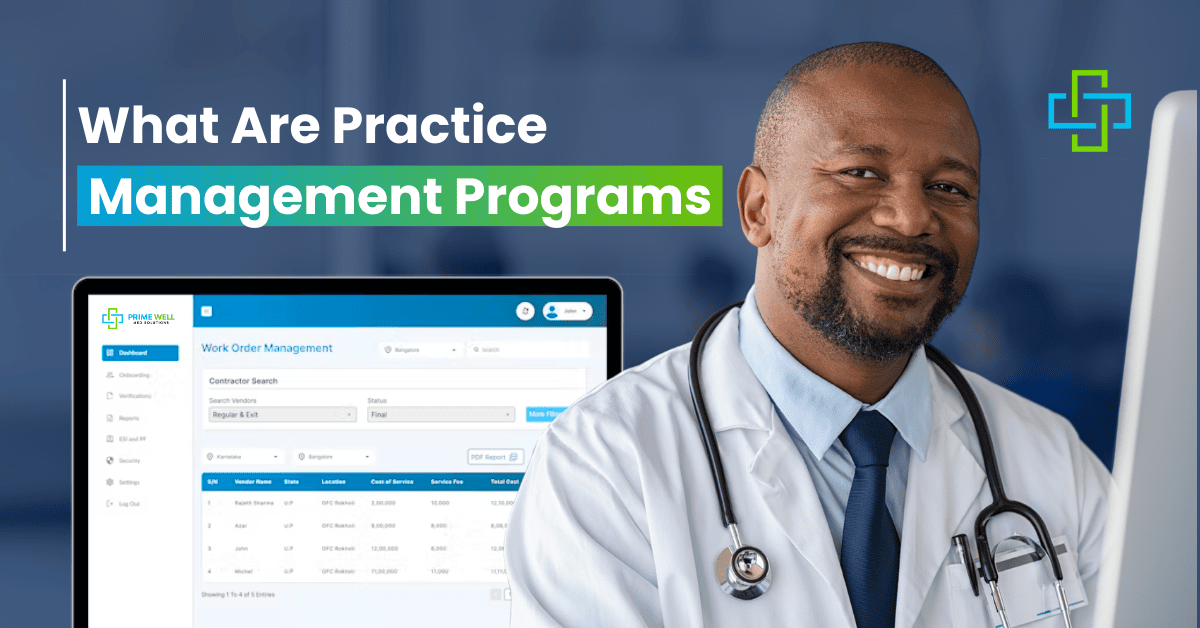Running a successful medical practice today is about more than good care. It’s about financial survival. That means you must know where your money is going and why.
That’s where revenue cycle analytics steps in.
In this guide, Prime Well Med Solutions will break down what revenue cycle analytics is, how it works, and why mastering it is the smartest move your practice can make in 2025.
Let’s get started!
What is Revenue Cycle Analytics?
Revenue cycle analytics is the gathering, analysis, and interpretation of financial information from medical practice’s revenue cycle. In simple words, it follows every dollar where it’s earned, held up, or lost, from patient registration through final payment.
In revenue cycle management services, Prime Well Med Solutions provides a clear picture of its financial situation to healthcare companies. It indicates precisely where inefficiencies, delays, or revenue leaks are happening.
Why It Matters for Medical Practices?
Still, ask yourself what revenue cycle analytics are doing in your plan.
It tells you the answers to difficult questions like:
- Why are your claims being denied?
- What services are most profitable?
- How much time is spent collecting payments?
- Is your billing staff performing at optimal levels?
The financial foundation of practice is healthcare revenue cycle management. While analytics is the X-ray eyesight that enables you to see what’s amiss and repair it.
Whether you’re a single practitioner or running a multi-specialty clinic, revenue cycle analytics can be the difference between flourishing and just scraping by.
How Revenue Cycle Analytics Works?
This is how the process works:
- Data Collection – Draws real-time data from your EHR systems, billing, clearinghouses, and patient portals.
- Integration and Automation – Analytics tools bring data together across departments—clinical, billing, and finance.
- Pattern Recognition – AI or dashboards detect bottlenecks—e.g., high denial rates for certain codes.
- Actionable Insights – You receive reports that suggest fixes, monitor KPIs, and gauge revenue potential.
Revenue cycle management services are no longer merely billing, revenue cycle analytics makes your data drive decisions.
Key Metrics Monitored in Revenue Cycle Analytics
A strong analytics tool monitors important RCM metrics, including:
- Days in A/R (Accounts Receivable) – Tracks how long it takes to receive payments
- Clean Claim Rate – The rate at which claims are submitted without errors.
- Denial Rate – Illustrates how many claims payers are rejecting.
- Net Collection Rate – Tells you how much of the revenue that can be collected you are really collecting.
- Charge Lag Days – The lag between claim submission and service.
The more precise your data, the better your financial footing.
Perks of Excelling at Revenue Cycle Analytics
Excelling at revenue cycle analytics software puts your practice in a genuine advantage:
- Identify delays and address issues before they turn into cash flow issues.
- Minimize denials through coding or documentation deficiencies identification.
- Anticipate out-of-pocket expenses, and minimize billing surprises.
- Identify which staff members deliver the highest performance.
- Prepare for seasonal trends, growth opportunities, and payer mix changes.
It’s like having a GPS for revenue, turn-by-turn directions to profitability.
Shared Challenges Practices Encounter with RCM Analytics
Even with the advantages, most providers are not successful in using and mastering revenue cycle analytics to their full potential.
Here’s why:
- Siloed Systems – Data resides in silos in billing, scheduling, and clinical platforms.
- Manual Reporting – Excessive time is spent collecting reports rather than taking action on insights.
- Poor Visibility – No easy-to-use dashboards prevent insights from reaching decision-makers’ hands.
- Change Resistance – Staff can be resistant to using analytics tools or changing workflows.
Conquering these obstacles takes transparent training, leadership support, and the proper revenue cycle management software.
How a Revenue Cycle Analyst Brings Value?
Ever thought about bringing on a revenue cycle specialist? This position has become crucial in today’s practices.
A revenue cycle analyst tracks trends, reads reports, and anticipates recommendations for how to boost collections and minimize delays. Think of them as your financial data detective, catching red flags before they cost you actual money.
Their analytical expertise in revenue cycle management in healthcare transforms raw data into accurate actions, whether it’s streamlining denial management or firming up pre-authorization controls.
Tips to Enhance Analytics in Revenue Cycle Management
Want to get started or enhance your existing strategy?
Here are some tried-and-tested tips to optimize your application of revenue cycle analytics:
- Invest in Dashboard-enabled Tools – OPT for platforms that facilitate real-time tracking and KPI monitoring.
- Train Your Billing Staff – Ensure everyone knows what the numbers say—and what to do about it.
- Set Clear Benchmarks – Compare performance against industry averages to remain competitive.
- Drill Down into Denials – Break out by the payer, CPT code, or staff to identify what’s pulling revenue down.
- Review A/R Aging Reports Weekly – Avoid letting old accounts accrue unbeknownst.
When used properly, analytics doesn’t just fix problems, it prevents them.
Wrapping Up
In 2025 and beyond, thriving medical practices won’t just work harder, they’ll work smarter.
Revenue cycle analytics is your roadmap to higher profits, faster reimbursements, and fewer billing headaches.
Whether you’re trying to improve cash flow, reduce denials, or just gain a better grip on your finances, the answers lie in your data.
Healthcare is evolving and so should your RCM approach.
If you’re ready to take the reins on your revenue, access expert guidance, or establish a strong analytics strategy specific to your practice, call us today!





